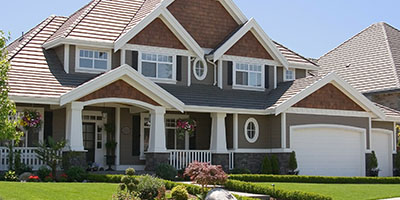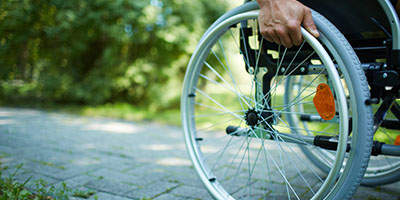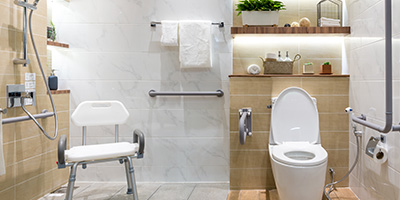How to Renovate Your Home for Aging in Place

Aging in Place Design Tips
There are 55.8 million older adults currently living in the U.S., and this number is expected to double by 2060, according to the U.S. Census Bureau. However, only 3% of older adults live in retirement homes. This means the majority of older adults are choosing to live with family or age in place.
Aging in place remodeling allows you to comfortably and safely live in your home throughout your lifetime. And the cost of home modifications for aging in place is more budget-friendly than the cost of a retirement home.
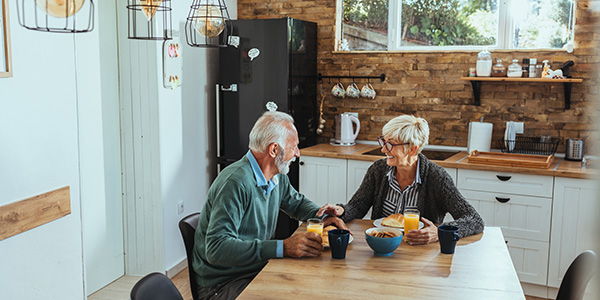
What Is Aging in Place?
Aging in place is staying in your own home as you grow older, instead of moving into a retirement home. Aging in place home renovations are for anyone who wants to live in the same house throughout their lifetime, whether you’re just buying your forever home and thinking about what modifications your future self will need or you’re an older adult wanting to make your house accessible and safe. You could be planning for visual impairment, mobility needs and more.

“Think of universal design, remodeling so that it works for anyone – elderly, disabled or otherwise. An effective universal design doesn’t look like you’re going into a hospital room or assisted living facility. It’s safe, simple and stylish.”
Mike Foti, President, Innovate Building Solutions
A good place to start with aging in place remodeling is addressing any current hazards in your home, such as fixing loose railings, installing non-slip floors and replacing poor lighting. If you’re renovating your home, be sure to keep your floor plan as open as possible so there is room to use a wheelchair or walker.
What Are the Most Common Aging in Place Home Modifications?
When considering home renovations for seniors, people typically choose to tackle the bathroom and kitchen. The most common location for falls in the home is the bathroom, with 35.7% of fall injuries in adults happening there, according to a study done by the National Center for Injury Prevention & Control. The kitchen comes with its own safety issues, such as fires, cuts and carbon dioxide poisoning. It’s important to make sure that these rooms are not only remodeled to help prevent falls but also to make cooking and cleaning more accessible.
What Is the Cost of Aging in Place?
The average cost of aging in place remodeling is $3,000 to $15,000. If you’re renovating your entire home, you may spend $50,000 or more. But if you’re just replacing door knobs and faucets or buying a bench for your shower, you can spend as little as $300.
For a budget-friendly home renovation, consider the DIY approach. You’ll spend less if you redo your flooring, install handrails or add smart appliances yourself. And some of your projects may even be tax-deductible. However, if you need to widen doorways or add an in-law suite, you may want to work with a contractor.
Do Your Homework
You should research products and contractors before beginning your senior home remodeling project. Mike Foti with Innovate Building Solutions says finding a contractor who is a Certified Aging in Place Specialist (CAPS) is ideal. These contractors will know the best aging-in-place products to use and the best way to incorporate them into your home remodel. If you can’t find a contractor who is trained in universal and accessible design, find someone who is willing to make the modifications you need.

“Sometimes you have to sell the contractor on using a product or remodeling a certain way and explain why you need it. They might not know how it would work or how to install it, so they might not want to waste their time and money potentially installing it the wrong way.”
Mike Foti, President, Innovate Building Solutions
Room-by-Room Aging in Place Checklist
Aging in place design is not only for people currently reaching retirement age. It’s important to create a home that is functional for you now and as you age. By adding the following home modifications for seniors early on, you ensure that safety measures are already in place in your house when you need them.
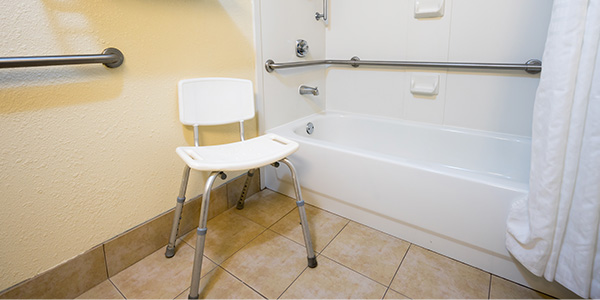
1. Bathroom
Average Cost: $20 - $25,000
If you’re only remodeling one area of your home, you’ll typically want to choose the bathroom. Aging in place bathroom remodels are important because they help reduce accidents and allow older adults to live more independently. So, how do you renovate a bathroom for aging in place? Check out the following home renovations for seniors to implement in your bathroom:
- Curbless shower: For an aging in place shower, consider adding a wet room, or a curbless shower. It eliminates any barriers to getting in and out of the shower. It’s easy to walk or wheel right in, meaning there’s less potential for an accident. Check out our DIY guide on converting a bathtub into a walk-in shower.
- Shower bench: Adding a bench in your shower allows you to spend as much time in the shower as you need without worrying about falling.
- Widen your doorway: To be wheelchair accessible, your bathroom doorway should be 36 inches wide.
- Raised toilet: Adding a raised toilet seat is an easy way to make your toilet more accessible. This makes it easier and safer for people to sit down and helps prevent falls.

“A lot of people like to have glass. However, they might want to design it by using a shower screen. The advantage of a shower screen is you can reach around to turn on the shower or you can move the screen and roll inside.”
Mike Foti, President, Innovate Building Solutions
- Non-slip floor covering: Installing a non-slip floor covering — whether that be a mat, a particular type of flooring or a coating product — is essential to prevent slipping and falling in the shower.
- Roll-under sink: If you use a wheelchair, installing a roll-under sink will make it easier for you to roll right up to the sink and reach the entire surface of the counter. It will also eliminate the possibility of running into cabinets.
- Hand rails: Adding handrails in the shower reduces the chances of falling.
- Waterproof laminated wall panels: Anything that requires little to no maintenance to keep up is a plus as you get older. Waterproof laminated wall panels that look like tiles eliminate the need for scrubbing. All they need for a good cleaning is warm water on a clean cloth.
Looking for more ideas to create a safer bathroom?
Check out our Bathroom Safety Tips for Seniors Aging in Place!
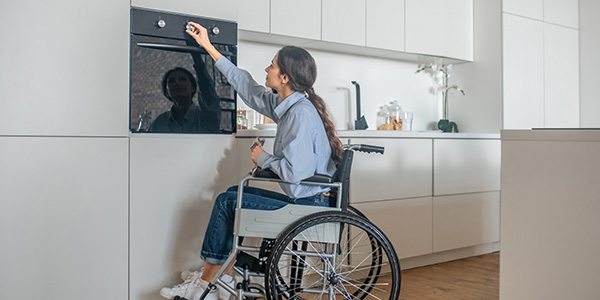
2. Kitchen
Average Cost: $8,000 - $50,000
The kitchen is the next most important area for aging in place remodeling. People spend a lot of time in the kitchen preparing food, eating and even hosting, so you want to make sure this room is safe and accessible as you grow older.

“The kitchen is the hub of most families, so it’s important to focus some attention on this room. Being able to cook for yourself as you get older is important.”
Mike Foti, President, Innovate Building Solutions
- Widen alleys and walkways: This will give you more space to move around the kitchen.
- Lower cabinets and countertops: If you replace your cabinets, install them about 3 inches lower than the conventional height for easier wheelchair accessibility. For your countertops, make sure they’re 28 to 30 inches high so you can reach them in a wheelchair.
- Pull-out countertops: Having a surface to pull toward you will make prepping for meals a lot easier. It will require less reaching, especially if you use a wheelchair.
- Remote-control range hood: This will allow you to control the fan without having to reach up.
- Roll-under cooktop: Like a roll-under sink, this will give you space to roll up to the stove in a wheelchair and help you avoid dinging your cabinets while cooking.
- Smooth cooktop: A smooth cooktop with a roll-out stool will make it easier to move hot items off the stove. Also consider installing a cooktop that allows you to slide dishes onto it directly from the counter.
- Roll-under sink: This will give you room for your wheelchair, or simply free up the area for your convenience.
- Smart appliances: Install a smart stove and oven that can be remote controlled and include safety features like an automatic turn off.
- Moving the microwave down: Keeping the microwave below the countertop will get rid of the need to reach up and bring it closer to you if you’re in a wheelchair.
- Wall oven: This will make the oven accessible to both someone in a wheelchair and someone standing. A wall oven with pull-out counter space will make it easier to transfer dishes in and out.
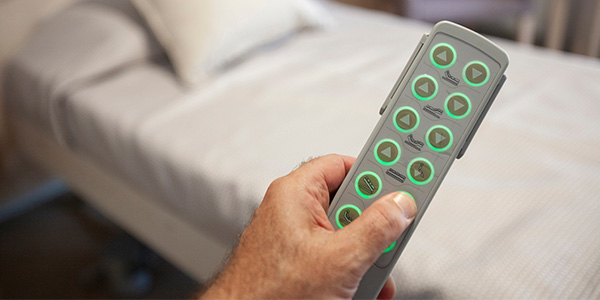
3. Bedroom
Average Cost: $80 - $12,000
Next up, the master bedroom. If you’re starting your home renovation from scratch, be sure to plan for your master bedroom to be on the main floor of the house. You can repurpose an office or playroom if your bedrooms are currently on a different floor.
Parents moving into your home? Build an in-law suite. An in-law suite typically includes a bedroom, bathroom and kitchen area. Here are some more bedroom home modifications for aging in place:
- Bed rails: Adding rails to the side of your bed will make it easier to get in and out of bed, especially if you’re transferring to and from a wheelchair. This also allows for more independence because you won’t always need someone there to help you.
- Lower bed: To help prevent falls, lower your bed to 20 to 23 inches above the ground.
- Adjustable bed: An adjustable bed is also a great option for older adults. You’ll be able to lower and raise it, as well as move it into a sitting position.
- Overbed table: This is a convenient way to keep all your essentials accessible. An overbed table hovers over the bed, making it easier to grab your phone, book or food than if it were on a bedside table.
- Bedside phone: Installing a phone next to your bed is important — if you ever fall or need help getting out of bed, having a phone right there ensures that you can call for help if needed.
- Smart lighting: Connect smart lighting to your mobile device so you can turn the lights on and off without getting out of bed.
- Closet lighting: Adding lights in your closet makes it easier to find your clothing and accessories.
- Accessible closet shelving: Declutter the floor by adding shelves or shoe racks to your closet. If you’re using bins or drawers in your closet, choose clear ones so you can see what’s inside without pulling everything out.
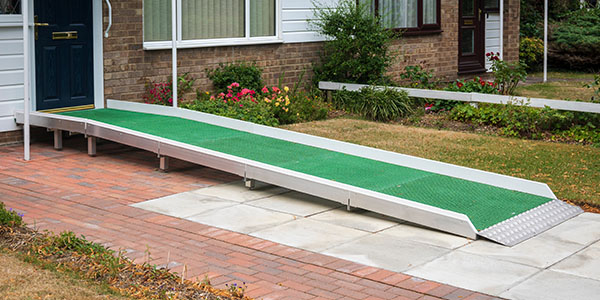
4. Entryways
Average Cost: $500 - $3,000
Adding a barrier-free design to your home’s entryways will make it easier to get in and out of your house. Here’s how to do it:
- Replace steps with ramps.
- Ensure at least one ramp into your home is covered for protection against the elements.
- Widen narrow doorways and hallways to accommodate mobility aids like a walker or wheelchair.
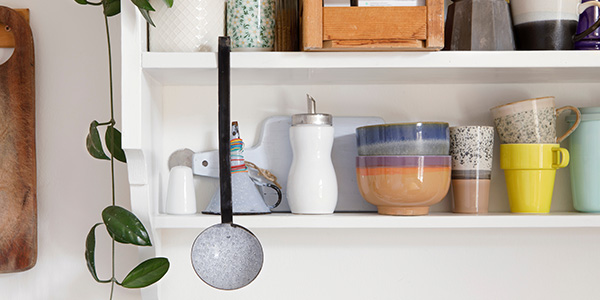
5. Throughout the House
Average Cost: $50 - $40,000
As you assess the rest of your home for aging in place and disability remodeling, make sure there’s enough space in each room, hallway and doorway for wheelchairs and walkers. If no turns are needed, the minimum width for a doorway or hallway to accommodate a wheelchair is 36 inches. However, 48 inches is considered ideal. Be sure to declutter your hallways and rooms so there are no potential obstacles. Check out more considerations for the rest of your home:
- Pull-down and pull-out shelves: These will make it easier and less dangerous to access anything that may be too high or too far to reach.

“Anything that can come to you versus you going to them will be beneficial. For example, cabinets that you can pull down to you in order to minimize having to reach up and over or use a ladder to reach will be better and safer.”
Mike Foti, President, Innovate Building Solutions
- Outlets and light switches: Outlets should be moved up and light switches should be moved down so they are easier to access from a wheelchair and require less bending.
- Electric stair lift: Consider adding an electric stair lift if your home has more than one floor.
- Light switches and thermostats: Make sure important control panels, like light switches and thermostats, are accessible and within reach. The Americans with Disabilities Act requires light switches to be 15 to 48 inches from the floor.
- Non-slip flooring: Make sure floors are non-slip throughout the house, and avoid rugs and carpeting as they make it harder for walkers and wheelchairs to maneuver.

6. Outside Your Home
Average Cost: $300 - $5,000
Lastly, don’t forget to update the outside of your home with aging in place home renovations. From landscaping tips to nighttime accessibility, check out the following exterior home projects:
- Paint your front door: Painting your door a contrasting color from the exterior of your home helps with visibility.
- Lever-style doorknob: Turning a doorknob can be difficult for people with arthritis. Installing a lever-style doorknob will make opening the front door easier.
- Front door automatic light: For safety add an automatic light at the front door. It will increase visibility, which will also help prevent falls.
- Walkway lighting: Additional lighting along your walkways or ramps will also help with visibility.
- Widen walkways: Just like your hallways, your walkways should be at least 36 inches wide to fit a wheelchair.
- Raised garden beds: Raise your garden beds to 24 to 36 inches high, so you don’t have to bend down or kneel to tend to your plants.
- Low-maintenance landscaping: With our DIY landscaping ideas, you can create a low-maintenance and beautiful yard. Choose ground cover instead of grass for less maintenance, include a rain garden or add hardscaping elements to your yard. And consider these sustainable landscaping ideas for drought-tolerant plants, more efficient watering systems and companion planting tips.

